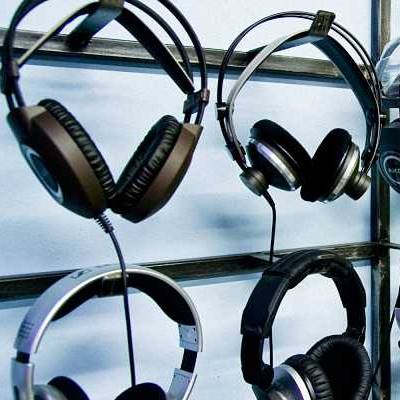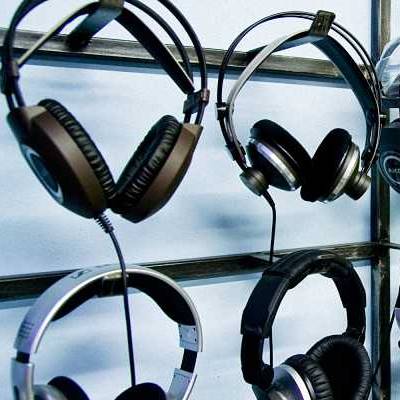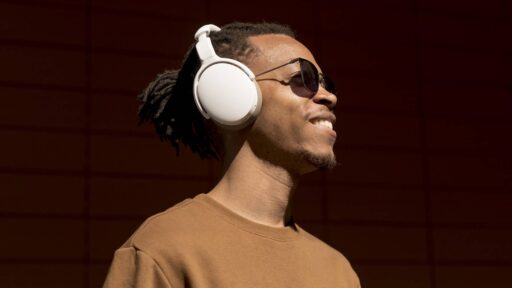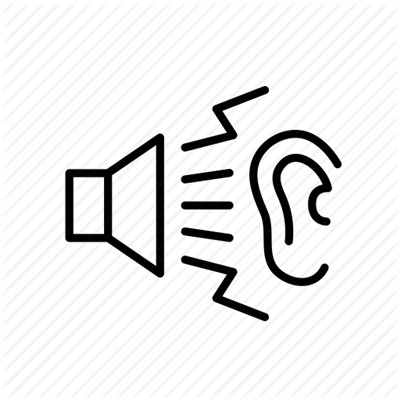
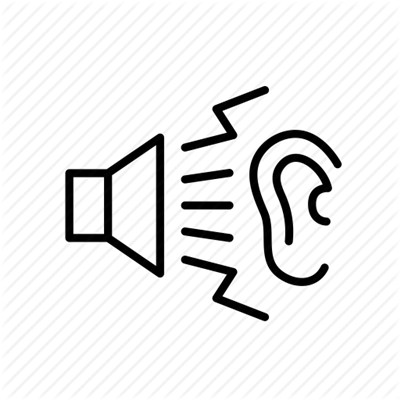
We explain the volume level that should not be exceeded if you want to enjoy the sound from your headphones without risks of damaging your ear. In this day and age where headphones are an integral part of our lives it is important to know how to prevent hearing loss from headphones and other noise emitting devices.
Headphones is one of the most purchased ‘gadgets’ in United States, especially by young people. Headphones have become a widespread object, but that also has its risks. Listening to music at a very high volume can damage our hearing abilities even irreversibly, as it can cause deafness.
The functioning of the human ear is based on the hair cells. They are in the inner part of the ear and transform sound into electrical signals. These signals are ‘transported’ by the nervous system to the brain, which converts them into recognizable and identifiable sounds by neurons. However, these hair cells can be damaged if the ear is subjected to strong high volumes, either with or without the headphones.
The risk of damage when listening to music at a high volume depends on how you make use of your headphones and, above all, the duration. The sound output volume of personal audio devices, such as some headphones, can range from 75 to 130 decibels at their maximum volume. A report from the World Health Organization recommends not using these devices for more than one hour. And where is the limit? According to WHO, at 60% of the maximum volume of the sound player.
To understand what the usual sound levels, the National Library of Medicine of the United States emphasizes that a normal conversation between two people has a volume that goes from 40 to 60 decibels and that of a rock concert is understood among the 110 and 120 decibels, similar to a disco.
The dangers of listening to music at an excessively high volume are many. If you do it continuously and regularly, for more than eight hours a day, it could even lead to deafness. However, the most common reason to hearing loss.
The tinnitus are one of the most common signs that you may be facing a hearing loss. Anyway, if you have a buzzing or deafening in the ears for more than 24 hours after being exposed to a high volume (either with or without headphones), it is advisable to visit a doctor. Family history also influences the possibility of hearing loss.
How to Use Headphones Safely
- The volume must not exceed 60% of the maximum allowed, which is usually around 130 decibels. If you listen more than an hour in this percentage the risk is more prominent. In general, the use of devices must be reduced, both in the exposure to sound and in its duration.
- If you would rather be proactive, then get a volume limiting headphone which are designed not to produce volumes beyond what’s recommended for safe listening usually 85 decibels. These volume limiting headphones are usually cheap at about $20. This collections come highly recommended.
Prevention at Concerts and Disco
- When going to places where music is played at high levels, you can use foam ear plugs, or ear muffs sold online for cheap. You should reduce the time you spend in noisy environments and avoid other people screaming in your ear to be heard, because this can cause more damage to your ears.
When to go to the Doctor
- If some sounds seem too loud.
- If there are problems to differentiate sharp sounds.
- If you need to raise or lower the volume to the television or radio frequently.
- If you have a buzzing or ringing in the ears.
Headphones Safe Listening Times
Some examples of maximum listening times recommended by WHO (World Health Organization) are:
- 85 dB: noise level inside a car. Eight hours.
- 90 dB: lawn mower. Two hours and 30 minutes.
- 95 dB: noise from an average motorcycle. 47 minutes
- 100 dB: car horn or underground train.15 minutes.
- 105 dB: mp3 player at full volume. Four minutes.
In addition to keeping these time limits in mind, the organization provides other tips:
- Keep the volume low.
You have to regulate the volume free of risks in your personal device and not exceed 60% of the maximum volume. In the same way, you have to use earplugs when going to a disco or a Noisy event.
- Limit the time you spend on noisy activities.
The duration of exposure to noise is one of the main factors to take care of. It is advisable to make brief listening breaks (for example, leaving the club where you are) and limit the use of headphones to one hour a day.
- Monitor safe levels of noise exposure.
Using smart phone technology to measure noise exposure levels can help.
- Pay attention to the warning signs of hearing loss.




